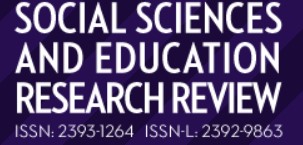Neutrosophic Socio-discoursiveness: From Ceremonial to Incertitude
Neutrosophic Socio-discoursiveness: From Ceremonial to Incertitude
Author(s): Georgiana Camelia StanescuSubject(s): Logic, Theory of Communication, Cognitive Psychology
Published by: Editura Sitech
Keywords: neutrosophy; discourse; ceremonial discourse; impositive discourse; argumentation; demonstration;
Summary/Abstract: This study represents an implementation of neutrosophy in the field of verbal communication (discourse). The methods used include meta-analytical, comparative, and inductive techniques. Concerning the neutrosophic criterion (F. Smarandache), as well as the way of thinking (Vattimo G & Rovatti P-A, 1998), we can distinguish two types of discourse: the ceremonial and the impositive discourse. In Gianni Vattimo's opinion (1998), there are two types of thinking: weak and strong thinking (weak and strong thought). The ceremonial discourse is based on weak thinking, and it has a high neutrosophic coefficient. The impositive discourse lies on strong thought and contains a low neutrosophic coefficient; this type embodies two forms: argumentation (the reasoning) and the demonstration. Starting from different directions, both types of discourse come close to validating knowledge, more precisely to what is true and what is false. This study puts forward the fact that the evidence, the demonstration, and the argumentation stand for discoursive aids that can consolidate a space of the critical opinion and of the neutrosophic Incertitude or a space of silence, according to the degree of eligibility and imposition.
Journal: Social Sciences and Education Research Review
- Issue Year: 9/2022
- Issue No: 2
- Page Range: 175-183
- Page Count: 9
- Language: English

